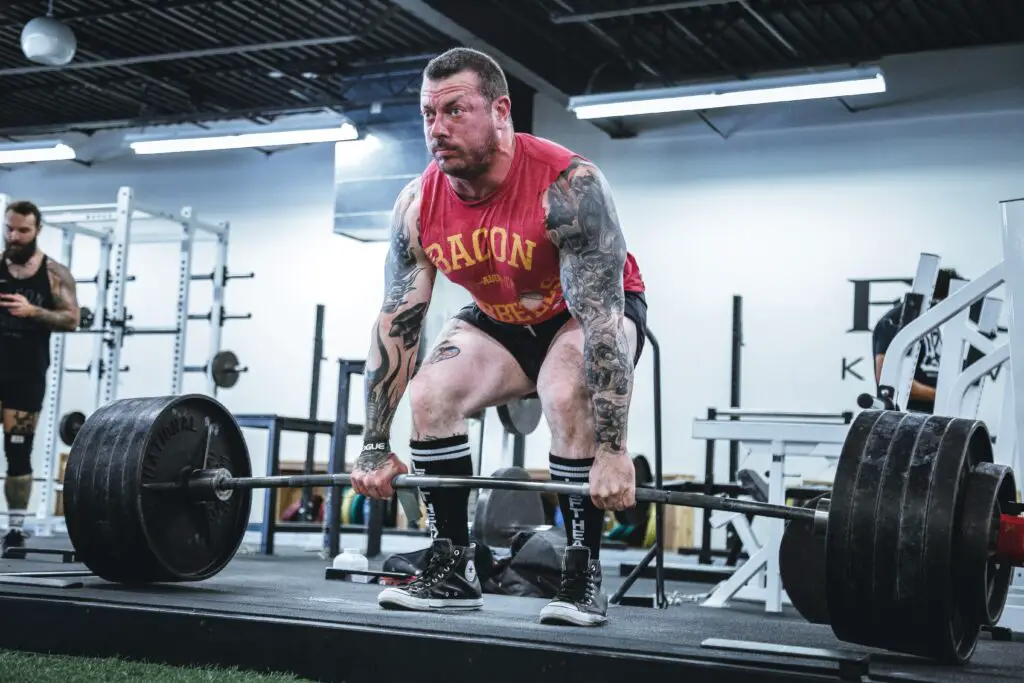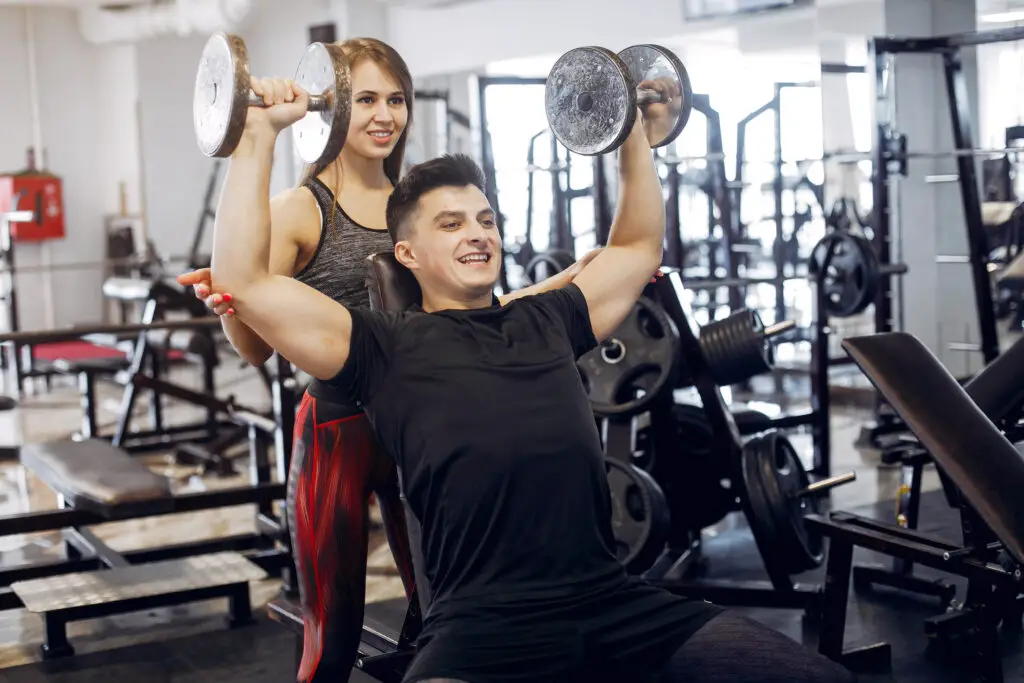Introduction
How to Become Physically Strong: In today’s fast-paced world, physical strength is not only a desire but a necessity. Whether you’re an athlete, a fitness enthusiast, or someone looking to improve their overall well-being, achieving physical strength is a goal that many aspire to. Building physical strength involves a combination of various factors, including exercise, nutrition, and mental determination. In this comprehensive guide, we’ll explore the key steps to help you become physically strong and resilient.
Table of Contents
11+ Working Tips How to Become Physically Strong: 1 Helpful Guidance
I. Understanding the Importance of Physical Strength
1.1. Introduction to Physical Strength
Physical strength is the foundation of a healthy and fulfilling life. It goes beyond bulging muscles and bench-pressing heavy weights. True physical strength encompasses endurance, flexibility, and the ability to tackle life’s challenges with confidence. In this article, we will delve into the depths of what it means to be physically strong and how you can achieve it.
1.2. The Benefits of Being Physically Strong
1.2.1. Improved Health and Longevity
A robust body is less susceptible to diseases and injuries. Physical strength can improve your overall health and extend your lifespan. We will explore how a strong body is better equipped to ward off illness and keep you vibrant.
1.2.2. Enhanced Athletic Performance
For athletes, physical strength is a game-changer. We’ll discuss how increased strength can elevate your performance in sports and other physical activities, giving you a competitive edge.
1.2.3. Increased Confidence and Self-Esteem
Physical strength is not solely a matter of the body; it also deeply involves the power of the mind. Discover how physical strength can boost your self-confidence and self-esteem, leading to a more fulfilling life.
1.2.4. Daily Life Functionality
Physical strength isn’t only relevant in the gym or on the field. It directly impacts your ability to perform everyday tasks with ease. We’ll explore how strength makes your daily life more manageable.
II. Setting Your Goals
2.1. Defining Your Strength Goals
2.1.1. Identifying Short-term and Long-term Objectives
Setting clear, achievable goals is the first step in your journey to becoming physically strong. We’ll guide you in defining both short-term and long-term objectives, ensuring you stay motivated and focused.
2.1.2. Realistic Goal Setting
It’s essential to establish goals that are both demanding and achievable. We’ll discuss how to strike the right balance between ambition and realism in your strength goals.
2.2. Tracking Progress
2.2.1. The Importance of Tracking and Measuring Results
Progress tracking is essential for staying on course. We’ll explore various methods and tools to measure your strength gains, keeping you accountable and motivated.

11+ Working Tips How to Become Physically Strong: 1 Helpful Guidance
III. Exercise and Strength Training
3.1. Strength Training Basics
3.1.1. Introduction to Resistance Training
Strength training, also known as resistance training, is the cornerstone of physical strength development. We’ll provide a comprehensive introduction to this training methodology.
3.1.2. Types of Strength Training
Strength training is a diverse field, with various methods and approaches. We’ll delve into the most common types, including weightlifting, bodyweight exercises, and more.
3.2. Designing Your Workout Plan
3.2.1. Creating a Personalized Workout Routine
One size doesn’t fit all when it comes to strength training. We’ll guide you in designing a workout plan tailored to your goals, fitness level, and preferences.
3.2.2. Balancing Cardio and Strength Training
A well-rounded fitness routine includes both cardiovascular exercise and strength training. We’ll help you strike the right balance between these two components for maximum results.
3.3. Exercise Techniques and Form
3.3.1. Proper Form and Technique in Strength Training
Executing exercises with the correct form is vital to prevent injuries and maximize gains. We’ll explain the importance of proper form and provide tips for maintaining it.
3.3.2. Common Mistakes to Avoid
Even experienced lifters can fall into bad habits. We’ll identify common mistakes in strength training and how to steer clear of them.
3.4. Progression and Overload
3.4.1. Understanding Progressive Overload
Progressive overload is the key to continuous strength gains. We’ll delve into this principle and how to apply it in your training routine.
3.4.2. How to Continuously Challenge Your Muscles
Muscle adaptation can stagnate your progress. We’ll discuss strategies to keep your muscles challenged and growing.
3.5. Cross-Training for Comprehensive Strength
3.5.1. The Benefits of Diversifying Your Workouts
Variety is the spice of life, and it’s essential in strength training. We’ll explore the advantages of cross-training and incorporating different exercise modalities into your routine.
IV. Nutrition for Strength
4.1. The Role of Nutrition
4.1.1. How Diet Affects Physical Strength
Diet and nutrition play a significant role in your strength journey. We’ll explain the impact of different nutrients on your physical prowess.
4.1.2. The Importance of Macronutrients and Micronutrients
Not all calories are created equal. We’ll discuss the importance of macronutrients (protein, carbohydrates, and fats) and micronutrients (vitamins and minerals) in your diet.
4.2. Building Muscle with Protein
4.2.1. Protein Sources and Requirements
Protein is the building block of muscles. We’ll explore various protein sources and the daily requirements to support muscle growth.
4.2.2. Timing Your Protein Intake
When you consume protein is as important as how much you consume. We’ll discuss the significance of timing your protein intake for optimal results.
4.3. Fueling Your Workouts
4.3.1. Pre-workout and Post-workout Nutrition
The food you eat before and after your workouts can significantly impact your performance and recovery. We’ll guide you on the best practices for fueling your exercises.
4.3.2. The Significance of Carbohydrates and Fats
Carbohydrates and fats are essential energy sources. We’ll explain their role in your strength journey and how to incorporate them wisely into your diet.
4.4. Hydration
4.4.1. The Impact of Dehydration on Strength
Proper hydration is often overlooked but is crucial for strength and overall health. We’ll discuss the consequences of dehydration and how to stay adequately hydrated.
4.5. Supplements for Strength
4.5.1. Supplements That Can Aid in Strength Development
While a well-balanced diet should be your primary source of nutrients, supplements can be beneficial. We’ll explore supplements that may support your strength journey.
4.5.2. Risks and Benefits
Supplements aren’t without risks. We’ll provide information on the potential risks and benefits of common supplements used in strength training.

11+ Working Tips How to Become Physically Strong: 1 Helpful Guidance
V. Rest and Recovery
5.1. The Role of Rest
5.1.1. The Importance of Sleep in Muscle Recovery
Recovery is where your body repairs and grows stronger. We’ll emphasize the role of sleep in this process and how to ensure you get enough quality rest.
5.1.2. Understanding Rest Days
Rest days are integral to preventing burnout and overtraining. We’ll explain the importance of scheduled rest days in your workout plan.
5.2. Techniques for Effective Recovery
5.2.1. Stretching and Mobility Exercises
Maintaining flexibility is essential for overall strength. We’ll introduce stretching and mobility exercises to improve your range of motion and prevent injuries.
5.2.2. Massage and Self-Myofascial Release
Massage and self-myofascial release can help relieve muscle tension and soreness. We’ll discuss techniques and tools for effective self-massage.
5.2.3. Mindfulness and Relaxation Techniques
Stress can hinder your progress. We’ll explore mindfulness and relaxation practices that can contribute to better recovery and mental well-being.
VI. Mental Strength and Motivation
6.1. The Mind-Body Connection
6.1.1. How Mental Strength Impacts Physical Performance
The mind and body are deeply interconnected. We’ll delve into the psychological aspects of physical strength and how mental resilience can enhance your performance.
6.1.2. Techniques for Enhancing Mental Resilience
Mental strength can be cultivated. We’ll provide techniques and practices to bolster your mental resilience and maintain motivation.
6.2. Staying Motivated
6.2.1. Setting and Maintaining Motivation
Staying motivated throughout your strength journey is a challenge. We’ll offer strategies to set and maintain your motivation, even when facing obstacles.
6.2.2. Overcoming Common Obstacles and Setbacks
Obstacles are a part of any journey. We’ll discuss common setbacks and how to overcome them with determination and a positive mindset.

11+ Working Tips How to Become Physically Strong: 1 Helpful Guidance
VII. Injury Prevention and Management
7.1. Preventing Injuries
7.1.1. Warm-up and Cool-Down Routines
Injuries can be setbacks. We’ll emphasize the importance of warm-up and cool-down routines to prevent common strength training injuries.
7.1.2. Common Strength Training Injuries and How to Avoid Them
Understanding common injuries and their causes is essential for prevention. We’ll identify typical strength training injuries and how to steer clear of them.
7.2. Dealing with Injuries
7.2.1. Recognizing and Addressing Injuries
Injuries can happen, despite precautions. We’ll guide you on recognizing and addressing injuries, including when to seek medical attention.
7.2.2. Rehabilitation and Recovery Strategies
Recovering from injuries requires a well-thought-out plan. We’ll discuss rehabilitation and recovery strategies to help you get back on your feet and regain your strength.
VIII. Professional Guidance
8.1. Personal Trainers and Coaches
8.1.1. The Role of Professional Guidance
Sometimes, professional guidance is necessary. We’ll explore the benefits of working with personal trainers and coaches to enhance your strength journey.
8.1.2. Finding the Right Fitness Professional
Not all trainers are created equal. We’ll provide tips for finding the right fitness professional who aligns with your goals and preferences.
8.2. Medical Consultation
8.2.1. The Importance of Consulting a Healthcare Professional
Medical conditions can impact your strength journey. We’ll underscore the importance of consulting a healthcare professional, especially if you have underlying health concerns.
8.2.2. Medical Conditions and Physical Strength
Certain medical conditions require special considerations in strength training. We’ll discuss how to adapt your routine to accommodate any health issues.

11+ Working Tips How to Become Physically Strong: 1 Helpful Guidance
IX. Case Studies and Success Stories
9.1. Real-Life Experiences
9.1.1. Inspirational Stories of Individuals Who Achieved Physical Strength
Drawing inspiration from real-life success stories can be incredibly motivating. We’ll share stories of individuals who transformed their lives through physical strength and the lessons we can learn from their journeys.
X. Staying Consistent
10.1. The Art of Consistency
10.1.1. Building Lasting Habits
Consistency is the key to lasting results. We’ll explore strategies for building and maintaining consistent strength training habits.
10.1.2. Strategies for Maintaining a Consistent Routine
Life is full of distractions, but we’ll provide techniques for staying on track and ensuring your strength training routine remains a priority.
XI. The Role of Technology
11.1. Fitness Apps and Wearables
11.1.1. Utilizing Technology to Track and Enhance Your Progress
Technology can be a valuable tool in your strength journey. We’ll review and recommend fitness apps and wearables that can help you track and optimize your progress.

11+ Working Tips How to Become Physically Strong: 1 Helpful Guidance
XII. Creating a Support System
12.1. Family and Friends
12.1.1. The Importance of a Supportive Network
Having a support system can make all the difference. We’ll discuss the role of family and friends in your strength journey and how to encourage your loved ones to join you.
XIII. Balancing Strength and Flexibility
13.1. The Role of Flexibility
13.1.1. Combining Strength with Flexibility
Strength and flexibility are not opposing forces; they complement each other. We’ll explain how to incorporate flexibility exercises, such as yoga and stretching, into your routine.
XIV. Aging and Strength
14.1. Staying Strong as You Age
14.1.1. The Role of Strength Training in Aging Gracefully
Aging is inevitable, but we can age gracefully and maintain strength. We’ll discuss the importance of strength training as you grow older and how to adapt your routine to suit your changing needs.
14.1.2. Adjusting Your Routine as You Grow Older
As you age, your training requirements change. We’ll provide insights into modifying your strength training routine to accommodate the aging process.
XV. Inspirational Quotes
15.1. Wisdom from the Strong
15.1.1. Motivational Quotes from Renowned Athletes and Fitness Experts
Drawing inspiration from the wisdom of the strong, we’ll share motivational quotes from renowned athletes and fitness experts that can fuel your determination.
XVI. Final Thoughts
16.1. Reflecting on Your Journey
As you near the end of this comprehensive guide, take a moment to reflect on your journey towards physical strength. Celebrate your achievements, both big and small, and remember that the pursuit of strength is a lifelong endeavor.

Conclusion
11+ Working Tips How to Become Physically Strong: 1 Helpful Guidance
In your quest to become physically strong, remember that it’s not just about lifting weights and following a strict diet. It’s a holistic journey that involves mental fortitude, smart training, and continuous learning. By following the principles outlined in this article, you can embark on a path to not only physical strength but a healthier and more fulfilling life.
Frequently Asked Questions (FAQs):
11+ Working Tips How to Become Physically Strong: 1 Helpful Guidance
1. What does it mean to be physically strong?
Answer: Being physically strong means having not only well-developed muscles but also endurance, flexibility, and the ability to perform a wide range of physical tasks with confidence and ease. It encompasses overall physical fitness and resilience.
2. What are the benefits of being physically strong?
Answer: The benefits of physical strength include improved health, enhanced athletic performance, increased self-confidence, and the ability to perform everyday tasks more efficiently. It also contributes to longevity and an overall better quality of life.
3. How can I set realistic strength goals?
Answer: To set realistic strength goals, you should define both short-term and long-term objectives. These goals should be challenging but attainable, taking into account your current fitness level and personal preferences.
4. What is the role of nutrition in building physical strength?
Answer: Nutrition plays a significant role in building physical strength. Your diet affects muscle growth, energy levels, and overall performance. It’s essential to consume the right balance of macronutrients (protein, carbohydrates, and fats) and micronutrients (vitamins and minerals) to support your strength journey.
5. Can you build muscle with the right protein intake?
Answer: Yes, protein is essential for building and repairing muscles. Consuming an adequate amount of protein and timing it correctly, especially around workouts, can facilitate muscle growth and recovery.
6. How important is rest and recovery in the journey to physical strength?
Answer: Rest and recovery are crucial for building physical strength. Quality sleep, rest days, stretching, and other recovery techniques are essential for muscle repair and growth. Neglecting rest can lead to overtraining and injuries.
7. How can I stay motivated in my pursuit of physical strength?
Answer: Staying motivated can be a challenge. Setting and maintaining motivation involves understanding your personal reasons for pursuing physical strength, setting clear goals, and adopting strategies to overcome common obstacles and setbacks.
8. What are the most common strength training injuries, and how can I avoid them?
Answer: Common strength training injuries include strains, sprains, and overuse injuries. To avoid them, it’s crucial to warm up, use proper form, progressively increase the intensity of your workouts, and listen to your body. Cross-training and incorporating mobility exercises can also help prevent injuries.
9. Should I consult a professional for my strength training journey?
Answer: It’s advisable to consult a fitness professional, such as a personal trainer or coach, to ensure you’re following a safe and effective strength training program. If you have underlying health conditions, it’s also important to consult a healthcare professional for guidance.
10. How can I adapt my strength training routine as I age?
Answer: As you age, your body’s needs change. It’s essential to adjust your strength training routine to accommodate these changes. Focus on maintaining muscle mass, bone density, and overall functional fitness. Consider lower-impact exercises and prioritize flexibility and balance.
11+ Working Tips How to Become Physically Strong: 1 Helpful Guidance
These FAQs provide additional insights into the blog post’s content, addressing common questions that readers may have about the journey to becoming physically strong.


13 thoughts on “11+ Working Tips How to Become Physically Strong: 1 Helpful Guidance”